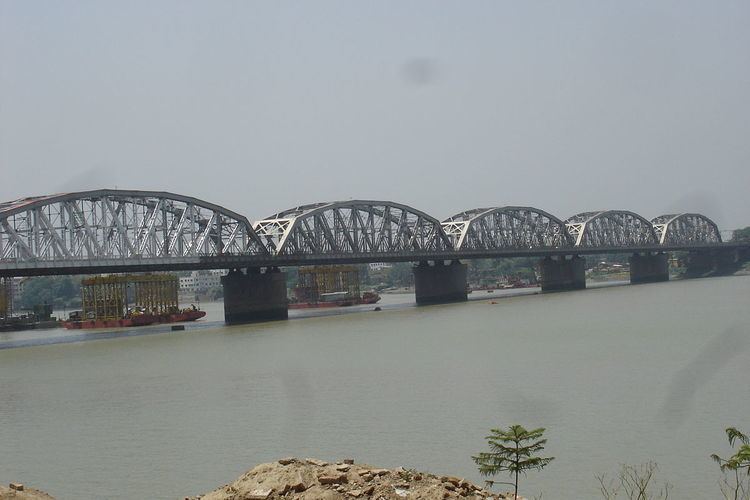Carries Rail cum Road bridge Locale Bally-Dakshineswar Total length 880 m Location Bally Material Steel and Stone | Crosses Hooghly River Address Hooghly River Opened 1931 Body of water Hooghly River | |
 | ||
Similar Nivedita Setu, Vidyasagar Setu, Jubilee Bridge, Howrah Bridge, Raj Bhavan | ||
Vivekananda Setu (also called Willingdon Bridge and Bally Bridge) is a bridge over the Hooghly River in West Bengal, India. It links the city of Howrah, at Bally, to its twin city of Kolkata, at Dakshineswar. Completed in December 1932, it is a multispan steel bridge and was built to provide road and rail link between the Calcutta Port and its hinterland. It is 2,887 feet (880 m) long.
The erection and deep well sinking of the bridge was done by famous Kutchi-Mestri contractor and Industrialist Rai Bahadur Jagmal Raja Chauhan. His nameplate can still be seen on each girder of the bridge. The construction of bridge started in year 1926 and was completed in year 1932. The fabrication of the bridge was done at works of Braithwate & Company, Calcutta. The Bally Bridge was named Willingdon Bridge after Viceroy of India, Freeman Freeman-Thomas, 1st Marquess of Willingdon, who inaugurated it. The first train that ran across the bridge was named Jagmal Raja Howrah Express by the British, acknowledging the feat of Rai Bahadur Jagmal Raja. The bridge cost over ₹1 crore (US$150,000) in those years. The Bridge was built with eight spans laid at distance of 300 ft each. The length of bridge is almost half mile with 10 km approach roads on both sides. The foundation laid with well-sinking 100 ft down the river beds, girding, erection of abutments, arching was all done by Jagmal Raja. This Railway bridge is also important in annals of History of Railway in India because the Railway for the first time crossed over River Hooghly and reached Calcutta at Sealdah Terminus
The bridge serves both road and rail:
The famous Dakshineswar Temple is situated on the banks of the Hooghly River near the Bally Bridge. The bridge also has sister bridges over the river at different points, namely the Howrah Bridge (Rabindra Setu), the Vidyasagar Setu and Nivedita Setu.
This bridge has recently handled a daily traffic of 24,000 vehicles.
Vivekananda Setu had become weak as a result of ageing, and with heavy traffic, even repairs became difficult. There was need for a second bridge. Nivedita Setu was constructed parallel to it and around 50 metres (165 ft) downstream. It was opened to traffic in 2007. The Vivekananda Setu allows traffic movement upstream (Bally to Kolkata) while the Nivedita Bridge helps downstream transport (from Kolkata to Bally).
